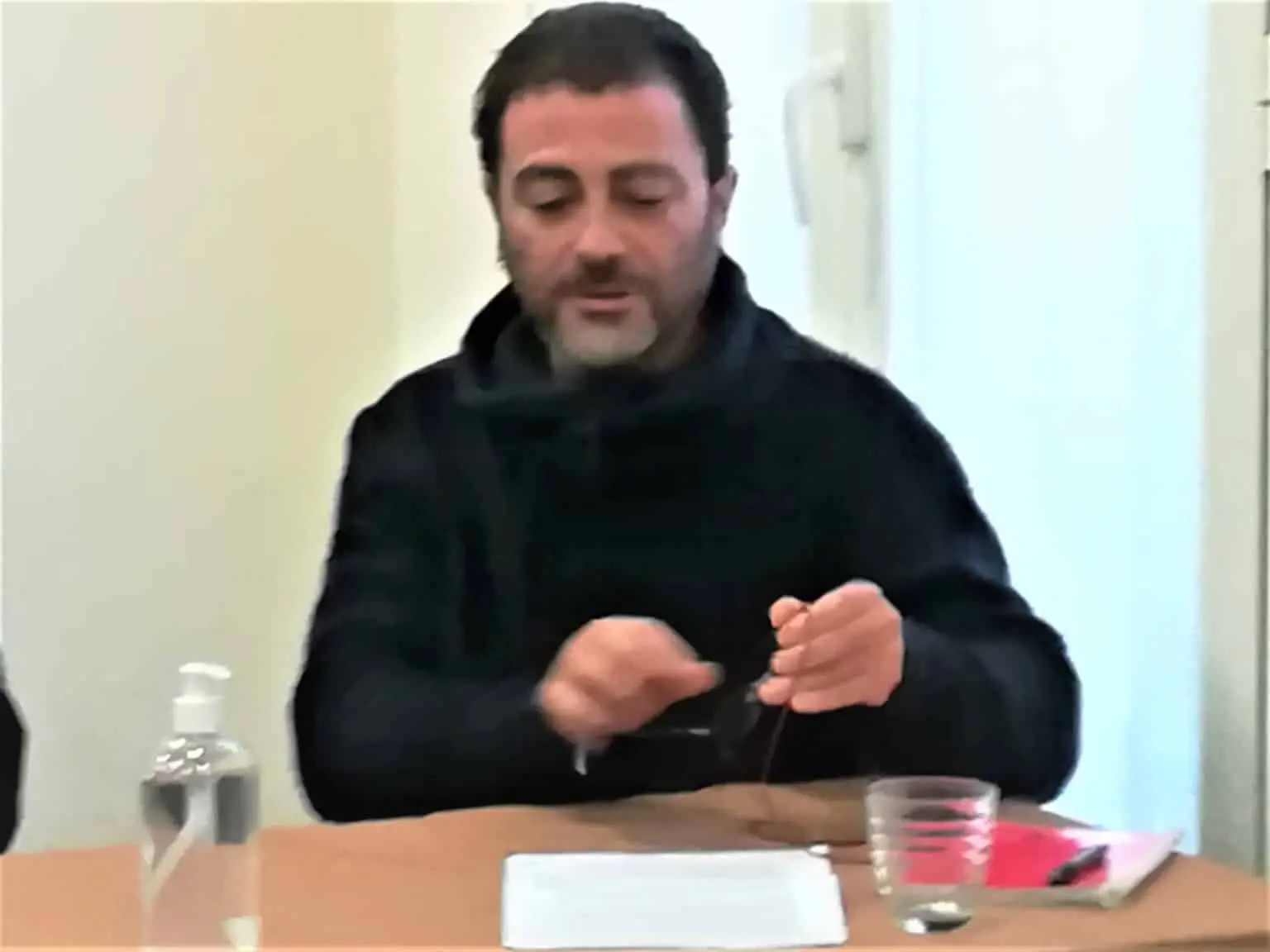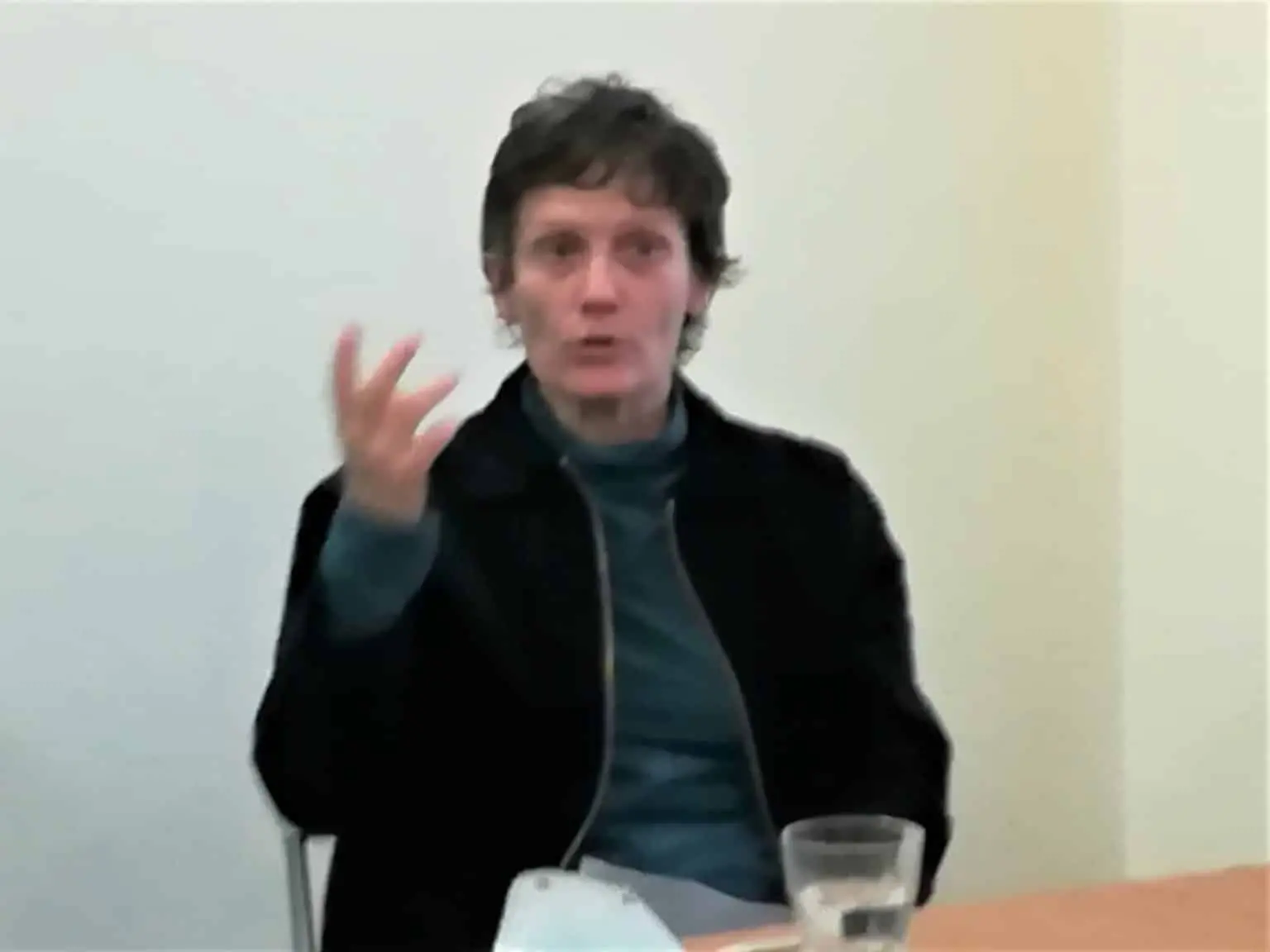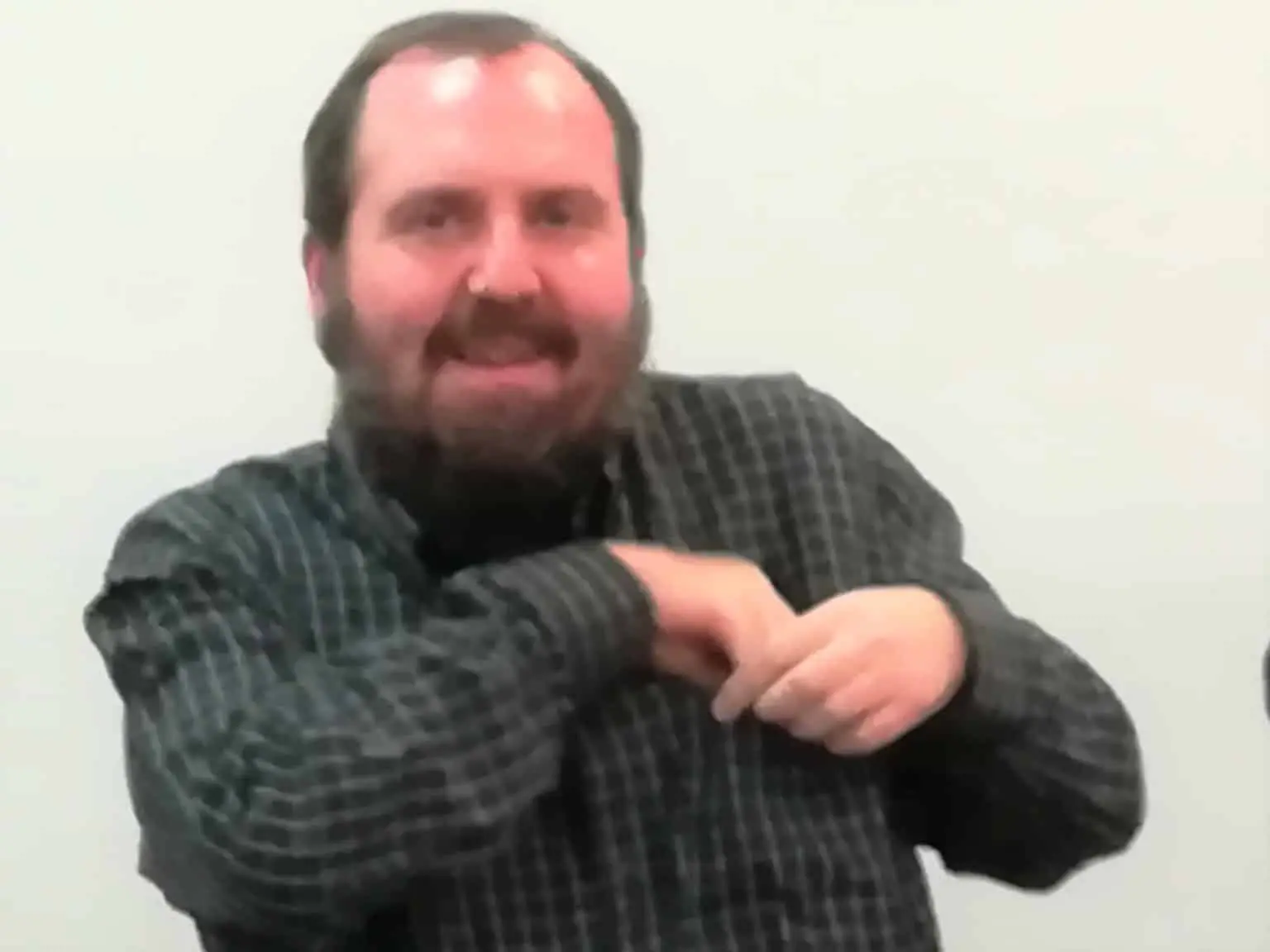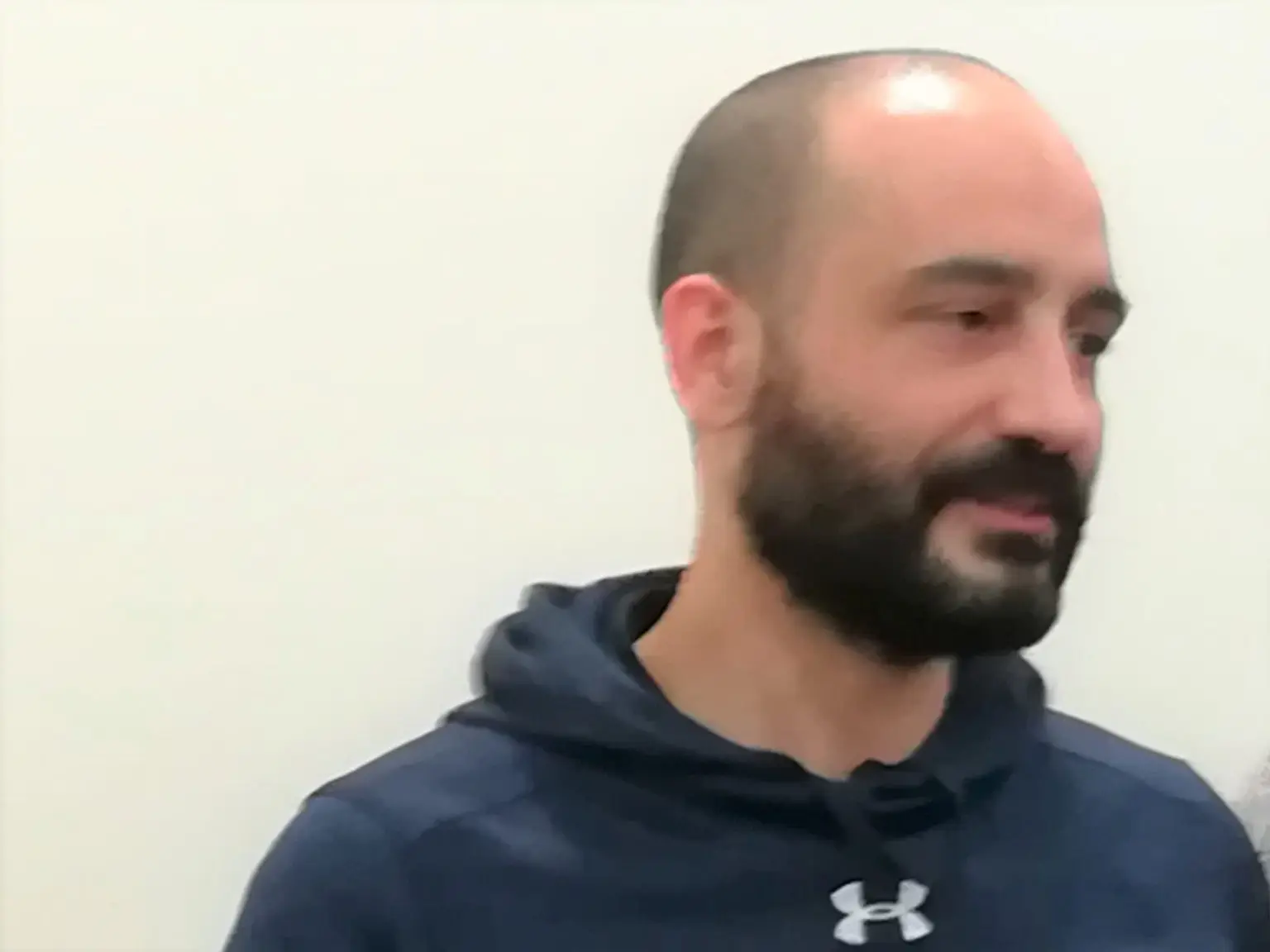Zen and Art Colloquium – Eight Zen Artists
The Zen and Art Colloquium – Eight Zen Artists took place on Sunday, January 17, with the artists present at the dojo and the audience attending via Zoom.
How does meditation influence sensitivity, inspiration, or creativity? Through the practice of zazen, the mind flows continuously and does not remain stuck on anything. Is it then more receptive to sensations, more open to inspiration, more available for creativity? On Sunday, January 17, 2021, the artists from Zen Kannon reflected on this and shared their experiences in an open colloquium, with the audience connected via Zoom. The first Zen and Art Colloquium is a Zen Kannon initiative that allows artists to reflect on art and the creative process from the perspective of Zen meditation and practice.
Verses by Master Nyojo
Master NANSEN opened the colloquium with some verses from Master Nyojo:
The original face is beyond birth and death.
Spring enters a painting of plum blossoms.
These verses were commented on by his disciple, Master Dogen:
“When you want to paint spring, don’t paint plum blossoms, paint spring directly. Painting plum blossoms is painting plum blossoms. It is not yet painting spring. Spring is spring when it directly enters the painting. Let the plum blossoms begin the spring. Let spring enter the painting. This is how Master Nyojo clarified the Eye of the True Dharma transmitted by the Buddhas, how he opened the Buddha’s eye in the plum blossom.”
According to LLUÍS NANSEN, Master Nyojo in these verses compares the mystery of life to the mystery of art. The original face, the original nature, enters the lives of beings just as spring enters a painting of plum blossoms. Dogen, said NANSEN, draws out this comparison to speak of art beyond form and beyond ego. It is as if Dogen were saying: If you want to awaken to the reality of Buddha, step aside and allow the original nature to emerge. Or in the same way, if you want to embody spring in your work, step aside and let spring enter your creation.
The Attitude of Zen Art
Can we say this is the Zen attitude of artists when creating a work? While it’s evident that there is a “self” that voluntarily picks up a brush or a violin, for Zen meditators it is possible to create beyond the self. A sublime creation is one that transcends the artist’s ego, and for that reason, it transmits that transcendence to the viewer. But for this to happen, the viewer must also perceive the work beyond their own ego.
Nansen stated that it is then—when artist and viewer meet in an unborn reality, in the space of non-creation—that true art emerges. He concluded the introduction to the colloquium with this poem by Dogen:
See with your whole body and mind;
listen with your whole body and mind;
and understand it intimately.
The Zen Artists
He then gave the floor to the Zen artists, inviting them to share how they understand the relationship between Zen and Art in their personal experience.

The Creative Process of Zen art
For XANU, painter and visual artist, Dogen’s text expresses the essence of the creative process, as well as the state in which the artist—or anyone who wishes to express themselves—must place themselves. Xanu runs a painting school, and in his case, art and Zen have come together naturally.
When a student tells him that they feel disconnected while creating, he replies: “When you paint a pear, forget everything you know—just be aware.” That’s not being disconnected, he says—it’s the opposite. Creation is that moment of clarity.
Xanu is convinced that as long as human beings exist, art will exist, because people need to express themselves. In his own life, Art and Zen are two paths that have joyfully converged.

The Sense of Transcendence
ISABEL BANAL, visual artist, began by quoting a poem by Joan Brossa:
What are we doing? Where are we going?
Where do we come from?
But here is a box
of colored pencils.
For her, art must make the inexplicable perceptible, and this connects deeply with the act of meditating. She agreed with XANU in recognizing, through zazen, ways of doing that were already her own—as if zazen were something innate to human beings. She also associates Zen practice with simplicity in art, the attempt to express everything with very little, and referenced a text by Antoni Tàpies and Eastern philosophy.
Thanks to zazen, Isabel has found in her work stillness, silence, concentration, and presence.
Isabel Banal works with the color white, and simply meditating while facing a wall is, for her, a fascinating exercise. Zazen has strengthened her concentration and deepened her attentiveness to the world around her, which is, in the end, the driving force of her work. She affirmed that the sense of transcendence and serenity brought by Zen has enriched and reinforced her artistic path.

Being Aware of Flowing
ITZEL RAMOS, Mexican pianist and composer, began practicing Zen at the suggestion of her partner. She also found many connections between her piano practice and meditation. Zen helps her feel calmer, study piano more effectively, and has taught her to be aware of flowing with the music.
“It’s not always easy,” she noted, because many times she found herself playing while simultaneously thinking about her shopping list. Thanks to meditation, she is now more aware of the present state of mind while playing the piano.

Discipline and Patience
DAVY LYONS, Irish singer-songwriter, began by saying that he has only been practicing zazen for a short time—six months—but has already noticed its influence. The discipline of Zen practice has brought order to his life: he now feels more focused, healthier, and happier. Despite common clichés, he believes that a happier person is also more productive.
Davy admits he doesn’t have much faith in inspiration as something that suddenly descends from the heavens. Yes, sometimes an image or a line of lyrics might appear, but for him, the most important thing is the work itself.
Zazen has strengthened his ability to create both music and lyrics. His method consists of working systematically for two hours a day with guitar, pen, and paper—no phone, no interruptions. If nothing comes, he accepts it. If what comes out is bad, he accepts that too, knowing next time it may be better. What matters most is discipline.
According to him, meditation has many similarities with this creative method: discipline, the mushotoku attitude (doing things without expecting personal gain), and patience. Zazen helps him enter a state of flow and become more creative. At this point, JON intervened, adding that “there’s no fixed formula. If I have to compose and I’m trying to achieve something—since there’s an objective—then I get blocked,” he said.

Improvisation and Embracing Imperfection in Zen Art
PASCAL MORENTE creates improvised techno, underground, and black music—all performed live—and he does it so that people can dance and “take a journey.” Like ISABEL, he sees a connection between his art and Zen through minimalism. Jazz once held a certain complexity for him, but recently he’s been playing with very few notes.
Another aspect that links Zen to his art is the acceptance of the imperfect result. When a sound emerges and is created on the spot, he accepts that sound—even if it’s rough or raw. What interests him most is that the sounds convey emotional power to the listener—a kind of transcendence, allowing the audience to travel into their own shadowy inner landscapes.

Accepting Frustration
For JON UNANUA, a musician from the Basque Country, zazen and Zen practice have been very helpful for his concentration. He believes that in order to be creative, one must be focused—and that staying focused is not so easy.
Jon also brought up the issue of frustration. Artists, he said, are often highly sensitive and at the same time have strong egos. They can’t help but compare themselves to others, wondering whether what they create truly reaches people. The desire to express what one carries inside but not knowing how can lead to frustration and inner struggle—something that has caused him deep suffering as a musician.
Zazen has helped him find peace with himself. When he creates something that isn’t perfect, he learns to accept it, trusting that things improve with continued practice. Everything improves when you stay committed and disciplined—not working for results, but because you love what you’re doing, letting go, and arriving—or not—where you hoped to go.
Jon believes that when internal struggle is present, creative work suffers, and that he is most creative when he is calm, not when he’s thinking that what he does is worthless or won’t reach anyone. In this, zazen has helped him greatly.

Inspiration
DANI PUIG, musician, is particularly interested in the concept of inspiration, which in ancient Greece was considered a deity by which we were touched. Since he began practicing zazen, he feels closer to that inspiration.
Zazen helps him keep the ground of consciousness well cultivated, making him more available to the words and sounds that may arise. When he feels connected to the Universe and aware of his smallness, a spark can suddenly appear, and something is set in motion. That’s how he connects poetry and music, and he keeps pulling on that thread.
The more open and fertile the ground is, the more he feels like a clear, pure channel, and everything flows more naturally. Words begin to string together one after the other—he chooses them carefully and combines them with music that moves people emotionally. Zen also supports his work as a music teacher using the Edgar Willems method, helping him to be more present—to fully engage with each thing he does in daily life.

Letting Go of the Ego
For VÍCTOR MATEO, violist, Dogen’s text evoked the experience of becoming one with the action, of forgetting oneself while performing. “It’s a matter of daily practice,” he said. For him, zazen and mindfulness have been the most helpful tools. Every day, for a while, his body and mind learn to enter a state of concentration and release.After long meditation sessions, when he picks up his instrument, the experience is completely different from days when he comes straight from work and is mentally active—because then he feels less flexible, less creative. After a retreat, when he plays, he feels deeply connected. He noted that musicians, when performing live, are often at their most focused—because there is an audience, and the nervousness sharpens their alertness, as if walking a tightrope, and time seems to fly. That may seem the opposite of zazen, he said, but in fact it isn’t.
Music Education
Víctor is concerned about how music education often cultivates the ego in young musicians. From an early age, they are taught to aim for perfection: perfect notes, perfect rhythm, perfect posture. Some schools push students to compete and seek awards, which, for Víctor, has distanced him from true happiness in music. All he wants is to play his instrument peacefully. Through zazen, he’s become aware of these ego-driven impulses—the need to compare himself with others, the pressure to meet strict expectations—and he realizes these patterns have caused him the most suffering.
Meditation allows him to recognize this and strive not to pass on those egoic patterns to his students. At this point, PASCAL added that the creative process is about letting go, about forgetting, about being completely relaxed—even if the mind is scattered. He said that true creation emerges when the artist’s ego disappears. “Musicians often play their best improvisations when no one is watching.” This led to a reflection on the tension between the disciplined self and the surrender of that self.
Forgetting Technique and Merging with Action
XANU reaffirmed this idea, saying that Zen helps us become more aware. It’s true that artists must cultivate technique, but whether in music, art, or simply as human beings, we are all capable of creativity. There’s a time for learning, for analyzing problems, but in the moment of creation, we must forget everything—and trust. When we let go of what we know, the brain suddenly connects with something—a smell, for example—and then something emerges.
Zen gives you the tools to place yourself in that space: to forget everything, to truly see what is happening, and to stop asking questions. Zen is the art of life. It’s very important. ISABEL shared how moved she was to see that the phenomenon of creation—whether approached through discipline, inspiration, or the acceptance of imperfection—was uniting all the artists at the table. For her, the key is to merge with what you are doing.
Zen art: Creativity in Everything We Do
JON then asked a key question: What is art? Because, he said, in a way, his grandmother’s lentils are art—made with focus and experience. So creation is present in everyday life, in everything we do. If we are attentive and focused, we can be creative in music, painting, human relationships, with our partner, with our family, and with ourselves. Creativity is all of this.
Someone from the audience thanked the artists for sharing their experiences and asked whether anyone could explain their method for being creative in daily life. JON replied that, like DAVY, creation requires practice. Inspiration may come while out walking, but it must be backed by a lot of work and discipline.
Zen Mind, Beginner’s Mind
He recalled a passage from Suzuki’s Zen Mind, Beginner’s Mind:
In order for water to come from the spring, there must first be water. Just as zazen only works if you actually practice, inspiration also only arises when there is effort behind it. He illustrated this with a revealing anecdote: “The other day during rehearsal, we paused for a coffee break—but the coffee was gone. Someone said, ‘There’s no coffee?’, someone else whistled a melody, another said a few words, and then we all went, ‘Hey, this could be a song!’ That’s my experience.”
ITZEL added that for her, it’s a mixture of both things. As a musician, when it comes to creating, it doesn’t matter whether her mind is agitated or calm. What matters is accepting the mood you’re in, just like in zazen. Authentic art can emerge no matter what state you’re in. The art of living is to accept everything.
Knowledge, Emotion, and Technique
According to XANU, there are three essential centers in creation: Reason – knowledge and understanding. Emotion – the ability to feel; if someone is like a stone, they’ll never be an artist. Technique – without the skill to play the guitar, for example, your ideas won’t be fully expressed. All three are necessary, and from there, countless creative paths are possible. Someone with only technique but no emotion may know a lot but won’t transmit anything. Zen helps us become aware of that. The moment of reconnection, of concentration, gives you tools to open windows and let paths meet.
DANI added that it’s all about balance between reason and impulse, yin and yang, discipline and inspiration. An inner balance between two poles. Practicing zazen and mindfulness helps us become available in the creative moment. Technique is important—but so is the ability to be free from it.
Video Art: A Zen Retreat
At the end of the colloquium Zen Art, was presented the video: “A Zen Retreat”, created entirely by the Sangha. Idea and Editing: Natàlia. Camera: Pascal. Music: USHANKA (Dani)

